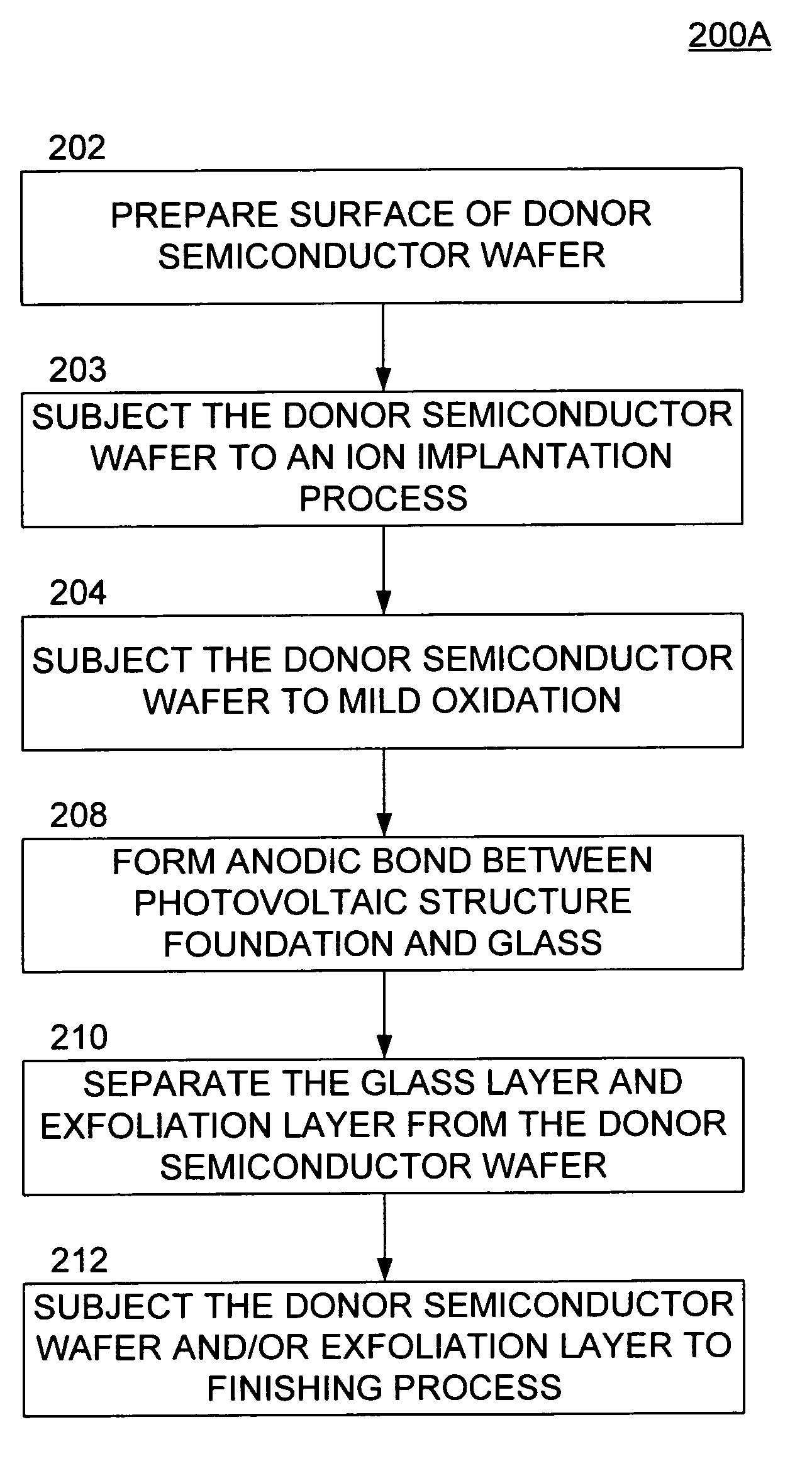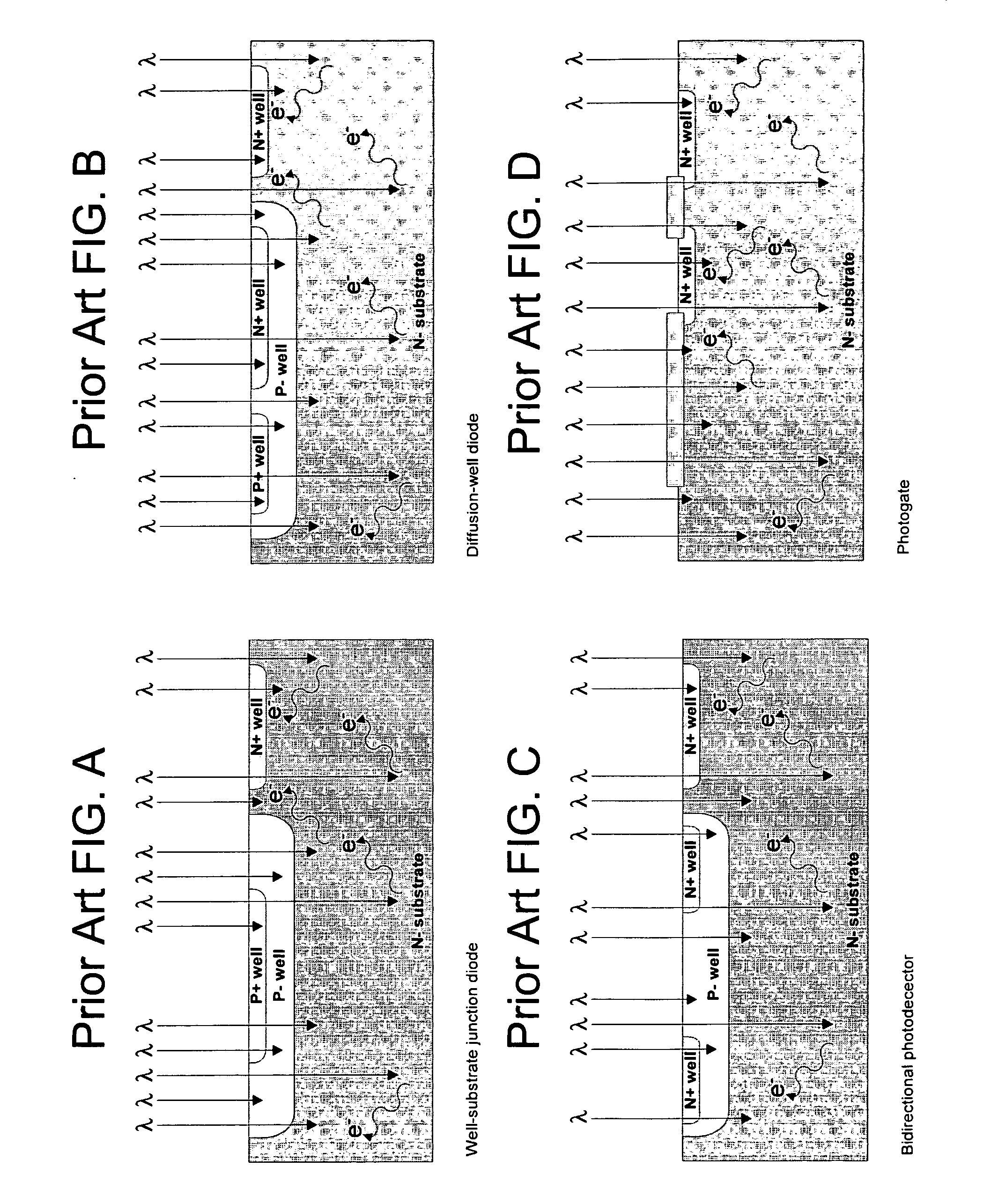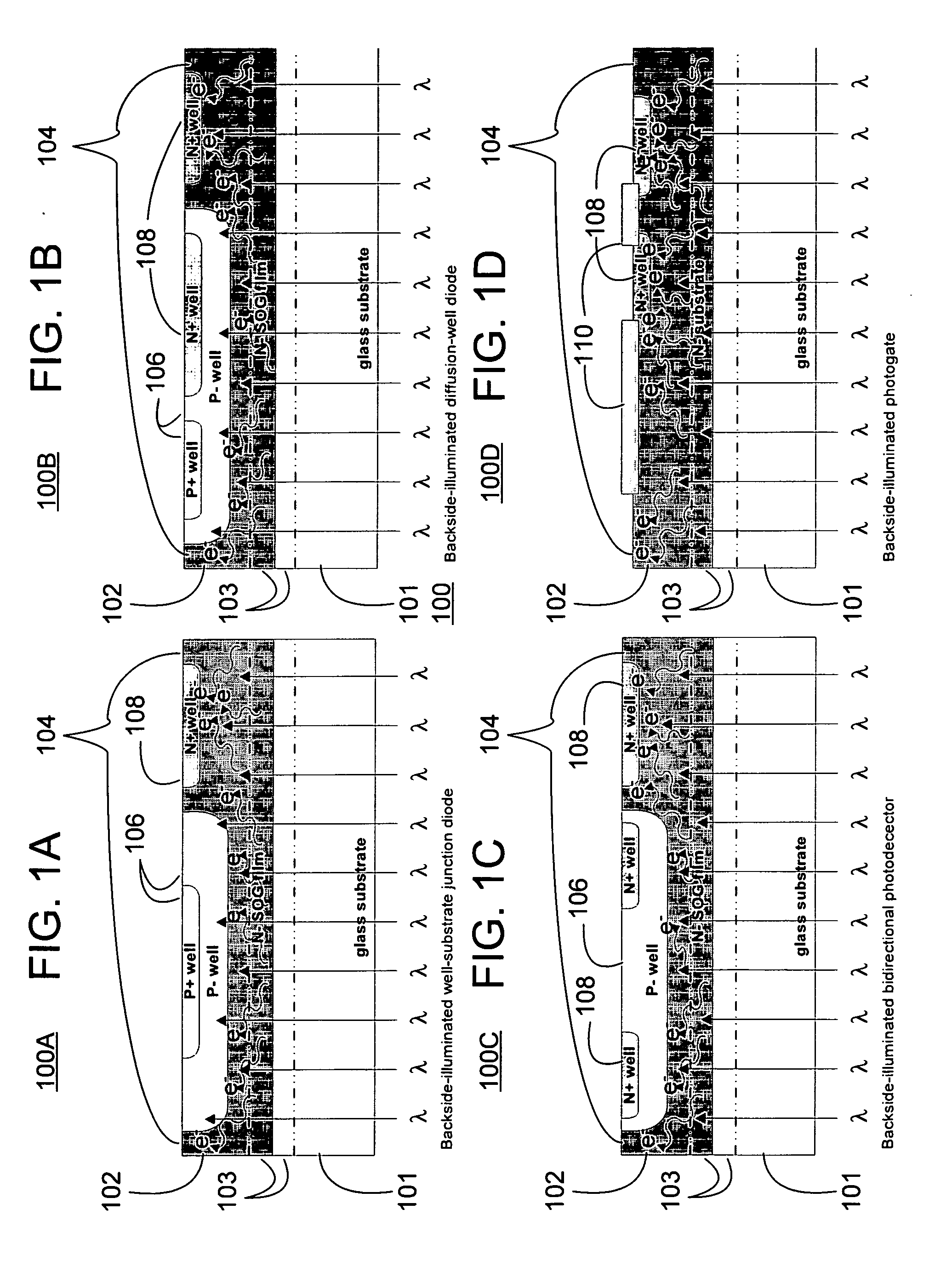Image sensor using thin-film SOI
a thin-film, image sensor technology, applied in the field of image sensors, can solve the problems of kerf loss, disadvantages of poly-crystalline silicon for image sensors, high cost and supply of high-grade silicon and its utilization, etc., to achieve the effect of reducing the need for polishing or furnace annealing of image sensors, improving manufacturing yield, and fast throughpu
- Summary
- Abstract
- Description
- Claims
- Application Information
AI Technical Summary
Benefits of technology
Problems solved by technology
Method used
Image
Examples
Embodiment Construction
[0046]Image Sensor Types
[0047]Image sensors typically fall into one of two types: charge coupled devices (CCD) and active pixel sensors (APS) based on complementary-symmetry / metal-oxide semiconductor (CMOS) technology. A charge-coupled device (CCD) is an image sensor consisting of an integrated circuit containing an array of linked, or coupled, capacitors sensitive to light. Under the control of an external circuit, each capacitor can transfer its electric charge to one or other of its neighbors. Once the array has been exposed to the image, the control circuit causes each capacitor to transfer its contents to its neighbor. The last capacitor in the array dumps its charge into an amplifier that converts the charge into a voltage. By repeating this process, the control circuit converts the entire contents of the array to a varying voltage, which it samples, digitizes and stores in memory. Stored images can be transferred to a printer, storage device or video display.
[0048]The most co...
PUM
 Login to View More
Login to View More Abstract
Description
Claims
Application Information
 Login to View More
Login to View More - R&D
- Intellectual Property
- Life Sciences
- Materials
- Tech Scout
- Unparalleled Data Quality
- Higher Quality Content
- 60% Fewer Hallucinations
Browse by: Latest US Patents, China's latest patents, Technical Efficacy Thesaurus, Application Domain, Technology Topic, Popular Technical Reports.
© 2025 PatSnap. All rights reserved.Legal|Privacy policy|Modern Slavery Act Transparency Statement|Sitemap|About US| Contact US: help@patsnap.com



